“Which way to the Akhara?” I asked the shopkeeper
He looked quizzically at me.
“The place where the wrestling happens?” I added hopefully.
“Acha Taleem,” he said, brightening up, pointing to a small opening in the wall.
Not sure if he had understood correctly I ducked under the doorway and into a narrow lane which opened up unexpectedly into a large sunlit courtyard.
The courtyard was dominated on one side by a small saffron temple, the kind one will find all over India, and standing there, dressed in nothing more than the tiniest of loin cloths, were some of the beefiest men I had ever seen.
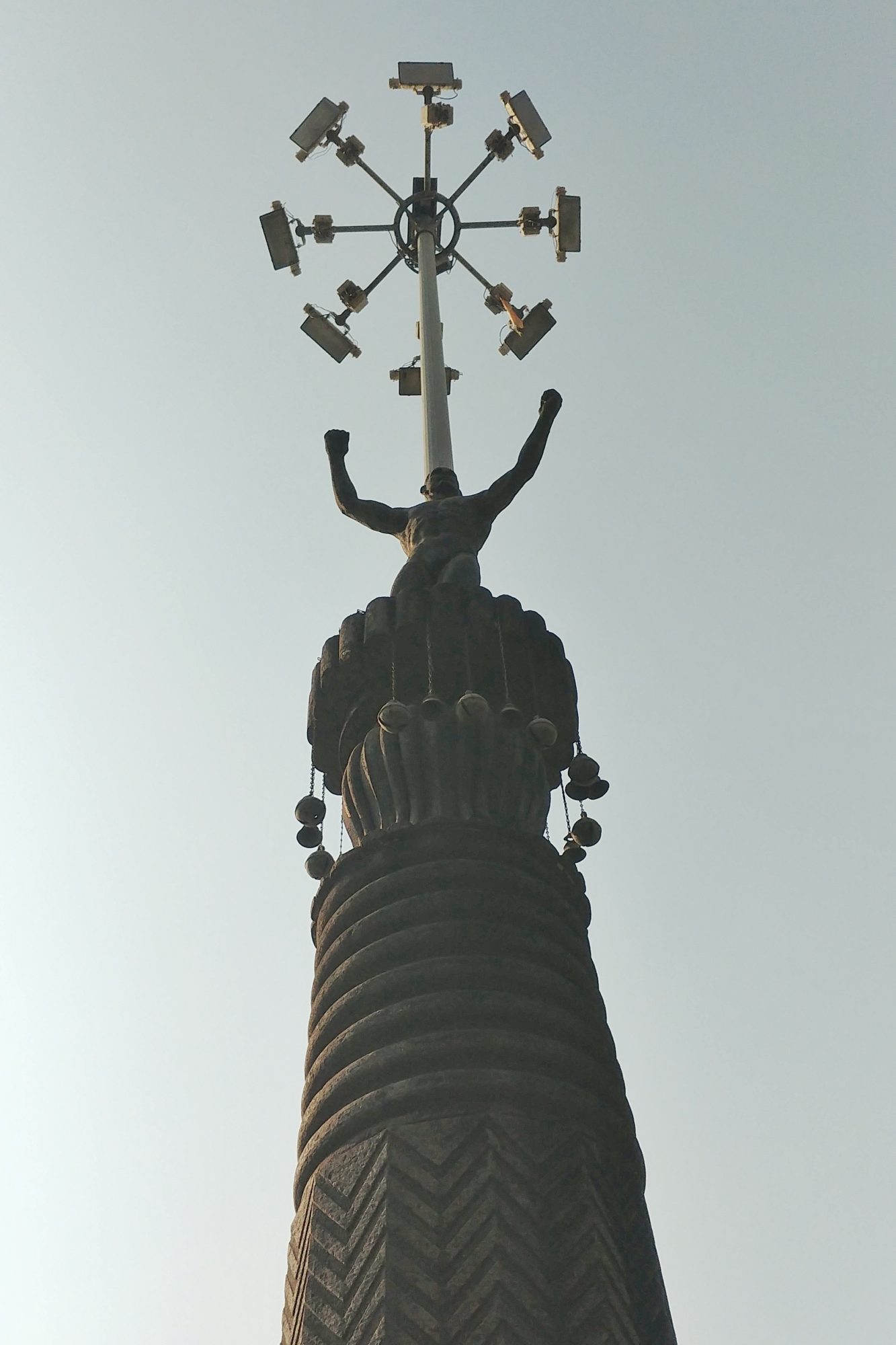
I was in Kolhapur, well known for its leather sandals, Mahalaxmi temple and spicy mutton delicacies, but whilst I had gorged on the latter the previous evening, it was not for the mutton lonche and the tamda rasa that I was here. On a earlier journey across North India I had spent time photographing pehelwans in the Akharas of Benares, which kindled my curiosity for the old tradition. Wrestling, or kushti as it is called locally, is deeply ingrained in the culture of the north and you can find traditional wrestling gymnasiums or Akharas all over the plains of Haryana, Punjab and Uttar Pradesh. Though wrestling has always been popular in the rural hinterland, the sport has seen an uptick in interest, driven by stellar performances of Indian wrestlers who have regularly brought home Golds and Silvers in the Olympics and Commonwealth Games and other international tourneys. Names like Sushil Kumar, Yogeshwar Dutt and the Phogat sisters have now become the subject of dinner-table conversation.
Most of the new found attention that wresting is receiving is focused on the wrestlers of Haryana, thanks to Aamir Khan’s Dangal, and other popular cinematic experiences. However, what is perhaps not as well known is that in Kolhapur, southern Maharashtra, and villages around survives a deep rooted kushti culture. It was wrestlers from here that put India on the international grappling map as early as 1920 when DR Shinde, a product of the Kolhapuri Taleems represented pre independence India in the Antwerp Summer Olympics, finishing fourth. Thirty years later at the 1952 Helsinki Olympics the spotlight shone on Indian wrestling, when Khashaba Dadasaheb Jadhav, at the age of 26, became the first Indian to win an individual Olympic medal taking the bronze in the bantamweight category. Of the 4 wrestlers who represented India at the Helsinki games, 3, including Jadhav & Krishnarao Mangave, who narrowly missed the bronze, were from Kolhapur. It was an Indian Olympic wrestling record that would stand for 56 years, before Sushil Kumar took the bronze in the 2008 Beijing games.
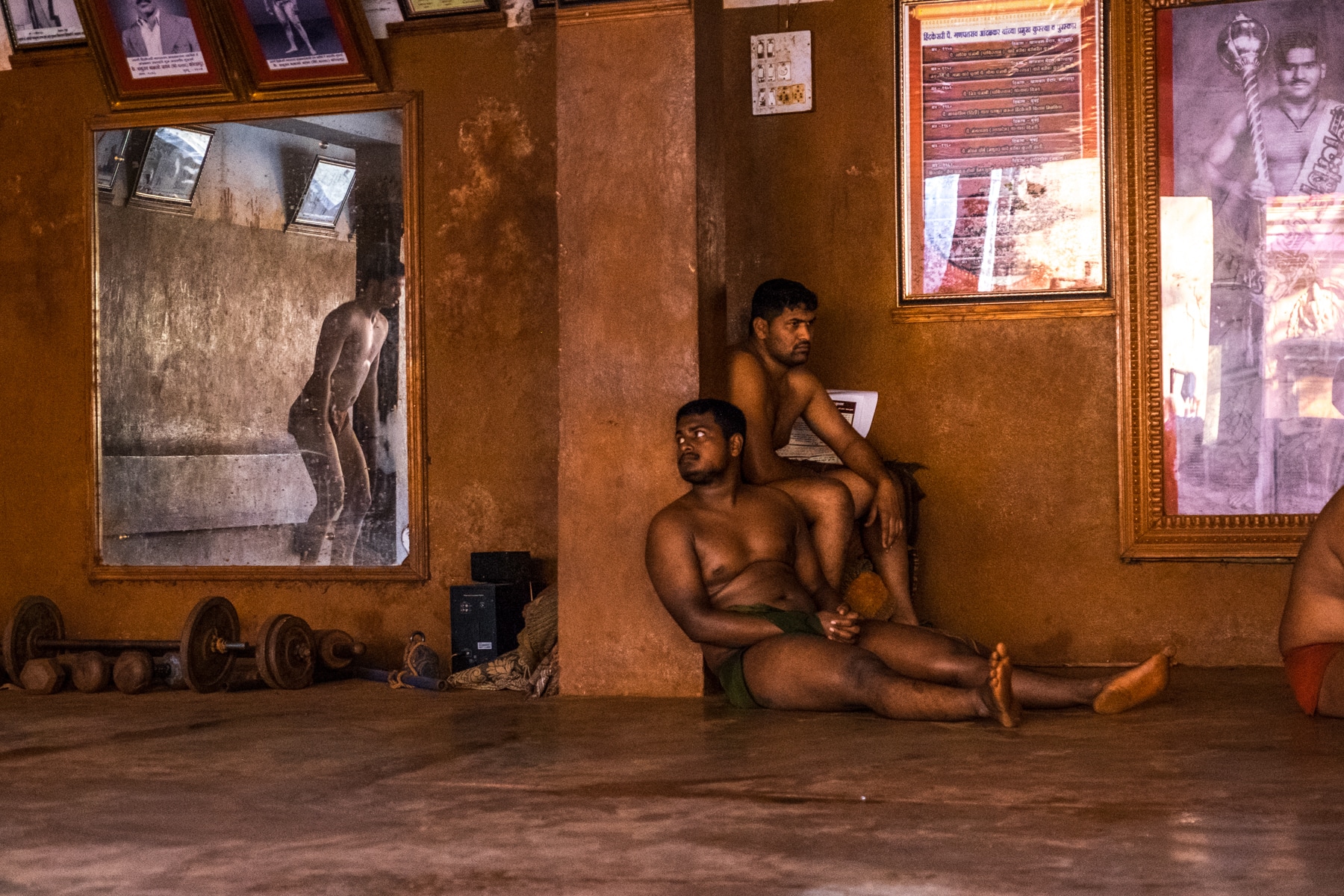
Wrestling in its present form came to India with the Mughals, the words Kushti and Pehelwan itself have Persian roots, marrying with the traditional subcontinental Malla – yuddha grappling form, which is said to have existed from the time of the India epics. Kushti tournaments, known as Dangals, are similar across the country, and though rules and the length of bouts differ slightly from place to place, winning usually means pinning your opponents shoulder or waist to the ground for a period of time. Traditionally, wresting in India has been the preserve of mud arenas, with the increasing popularity and recognition of the sport, there is a push from the Wrestling Federation of India (WFI), the governing body, to train on modern mats with the same points system followed in the Olympics and Commonwealth games.
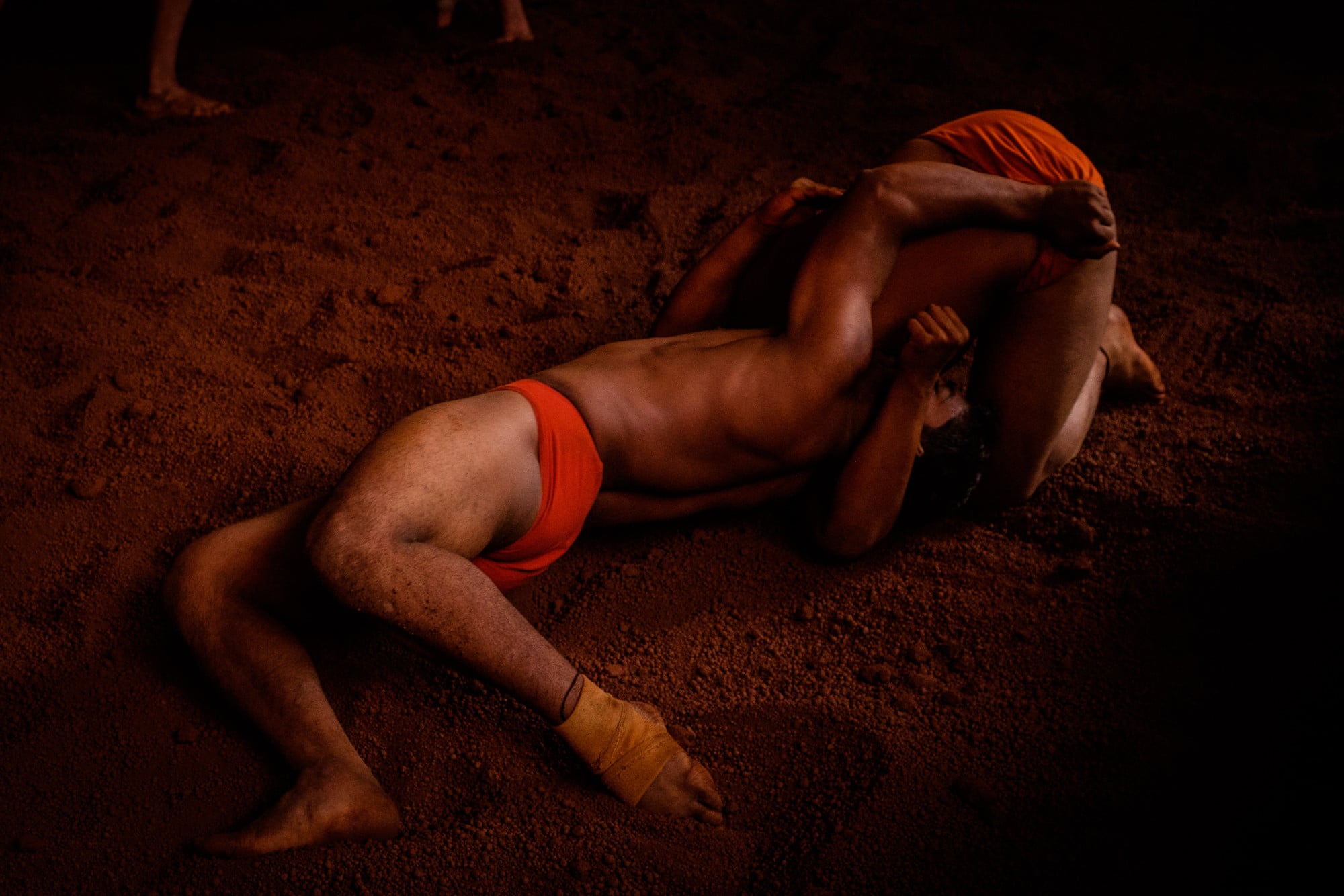
Maharashtra’s own tryst with wrestling began at least 300 years ago when the sport was encouraged and patronised under the Maratha rulers. However Kushti, truly came into prominence at the end of the 19th century during the rule of Shahu Maharaj, ruler of the erstwhile princely state of Kolhapur. Shahu Maharaj, a wrestler himself, built hundreds of Akharas across the city, and inspired by the Colosseum of Rome built Khasbaug, a wrestling stadium which remains the largest in India. Besides building the physical infrastructure which allowed wrestling to flourish and providing encouragement and funding for tournaments, Shahu Maharaj brought to Kolhapur wrestlers of repute from Punjab in present day Pakistan. It is an association that continues, with wrestlers from Pakistan and Iran being amongst the most popular in Kolhapur and villages in rural Maharashtra. A number of them make an annual trek there to complete in the international wrestling tournament held in Warananagar every December.
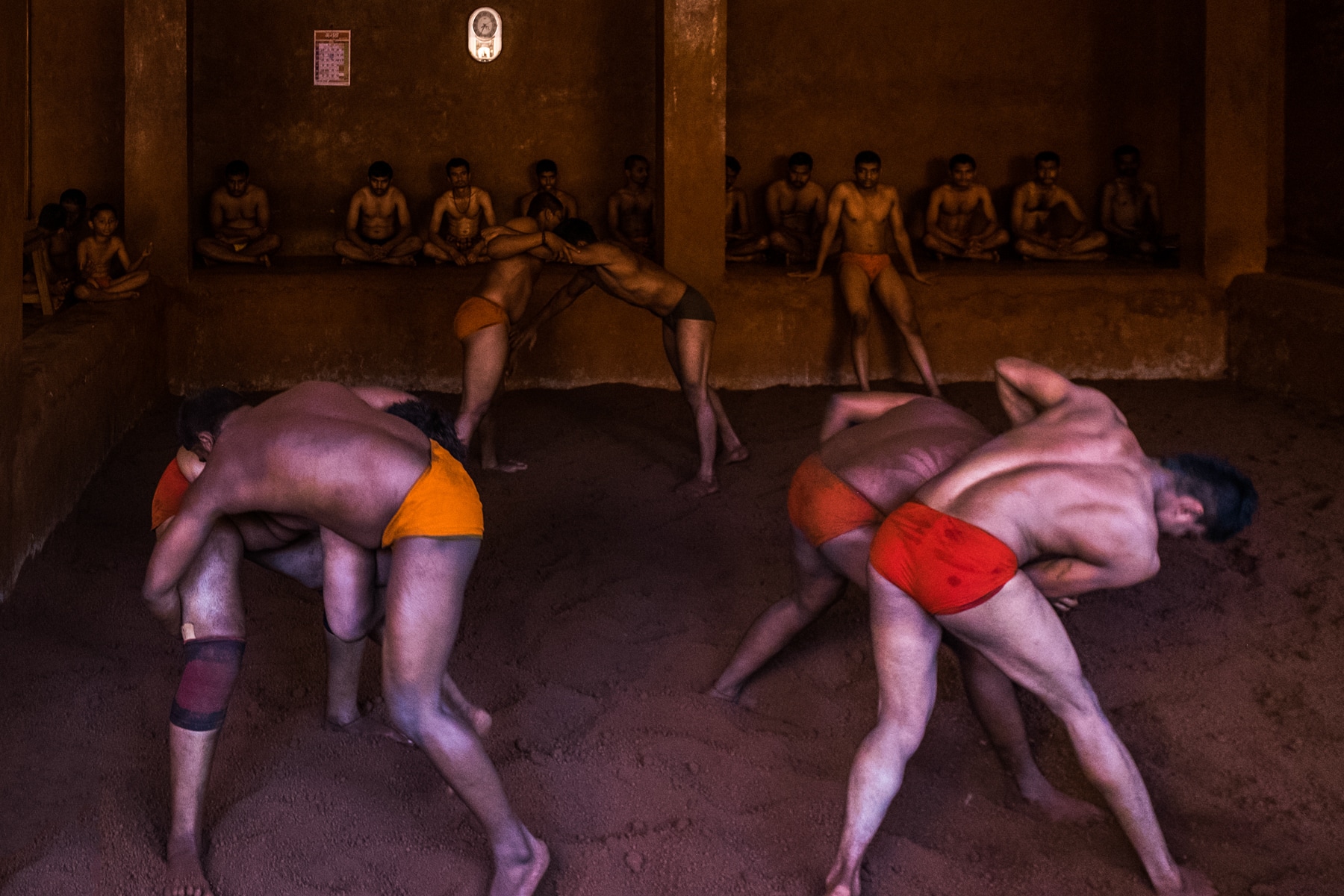
Unlike in the north, where wrestling arenas are referred to as Akharas, here in Kolhapur they are called Taleem, the Urdu word for education, another throwback to the time of Shahu Maharaj’s internationalisation of Kolhapuri Kushti and perhaps why the shopkeeper who directed me was initially confused when I asked for an Akhara.
Located in the old city within the boundaries of former palace of the Kolhaphuri Rajas, the Motibag Taleem is amongst the oldest in the city and one of the only 5 surviving traditional Taleems in Kolhapur. As the wrestlers prepare for their evening exercise, I remove my shoes and enter the main wrestling pit or haud. Differing from the Akharas of the north, the mud pits here are sunken about 4 feet, giving the place an arena like feel. Everyday before the start of practice the mud pit is ploughed and smoothened removing stones and other unwanted objects, and the soil is mixed with ghee, water, lemon juice, turmeric and buttermilk. The ground is firm enough to grapple but not hard to injure with antiseptic properties that aid the wrestlers.
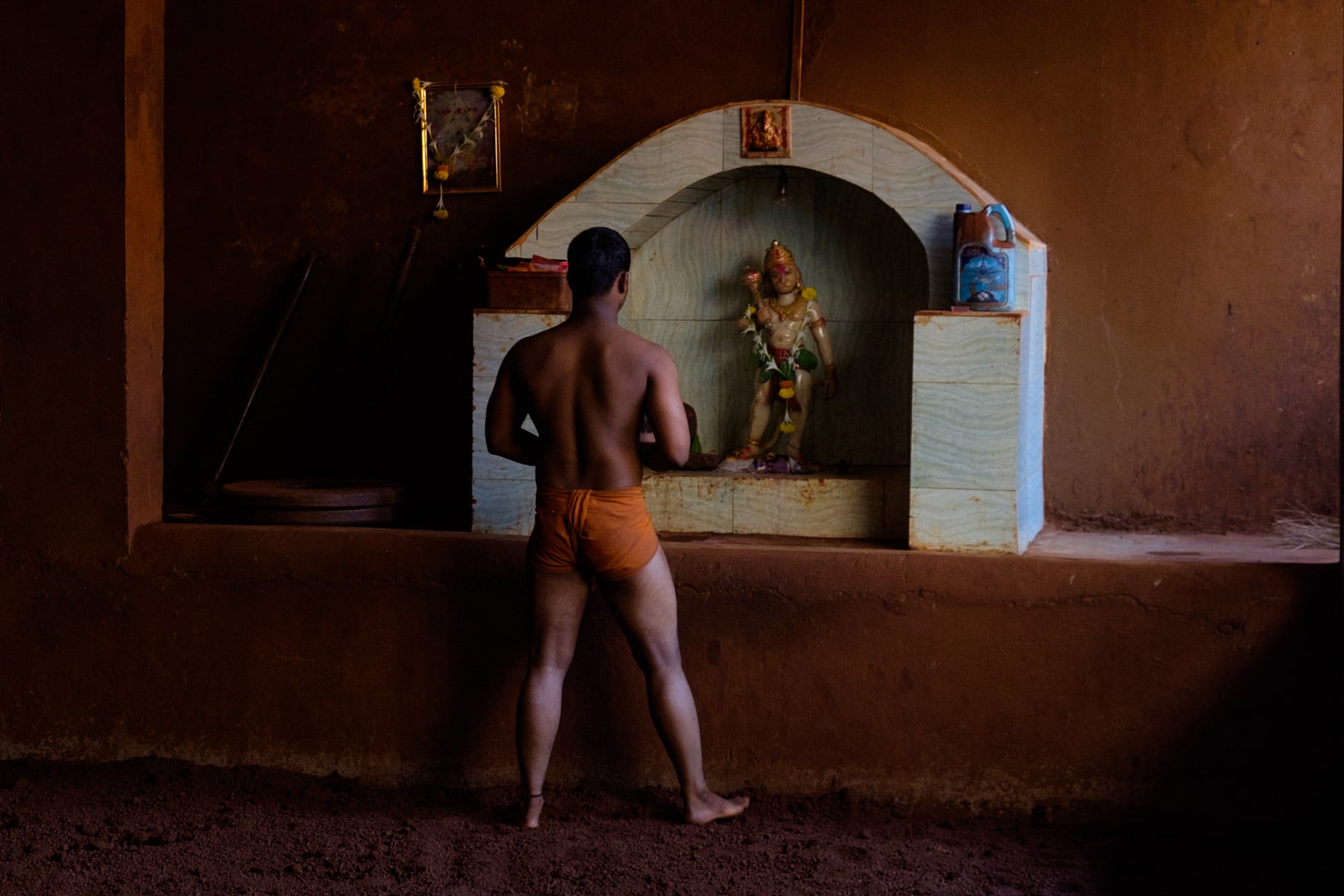
As I watch, the session starts with a puja to Lord Hanuman. Hanuman, revered for his strength and devotion, is the patron deity of all wrestlers and the red loincloth or langot donned by the grapplers is a nod to the monkey king.
The proceedings get underway with a series of exercises, including suryanamaskar and baithuks. The Ustaad or coach sets a punishing pace and at the end of the 10 minute warm up the pehelwans, from 10 to 60 years, are all glistening with sweat. As the wrestlers descend into the haud, I strike up a conversation with one of the younger wrestlers.
In his mid twenties, Sameer wears a confident smile and a sculpted physique, which speaks of hours spent working with weights, he looked more like a model than a wrestler. Earlier many of the wrestlers were full time professionals, living and training in the taleem, but now most have other jobs and train out of passion or to maintain fitness.
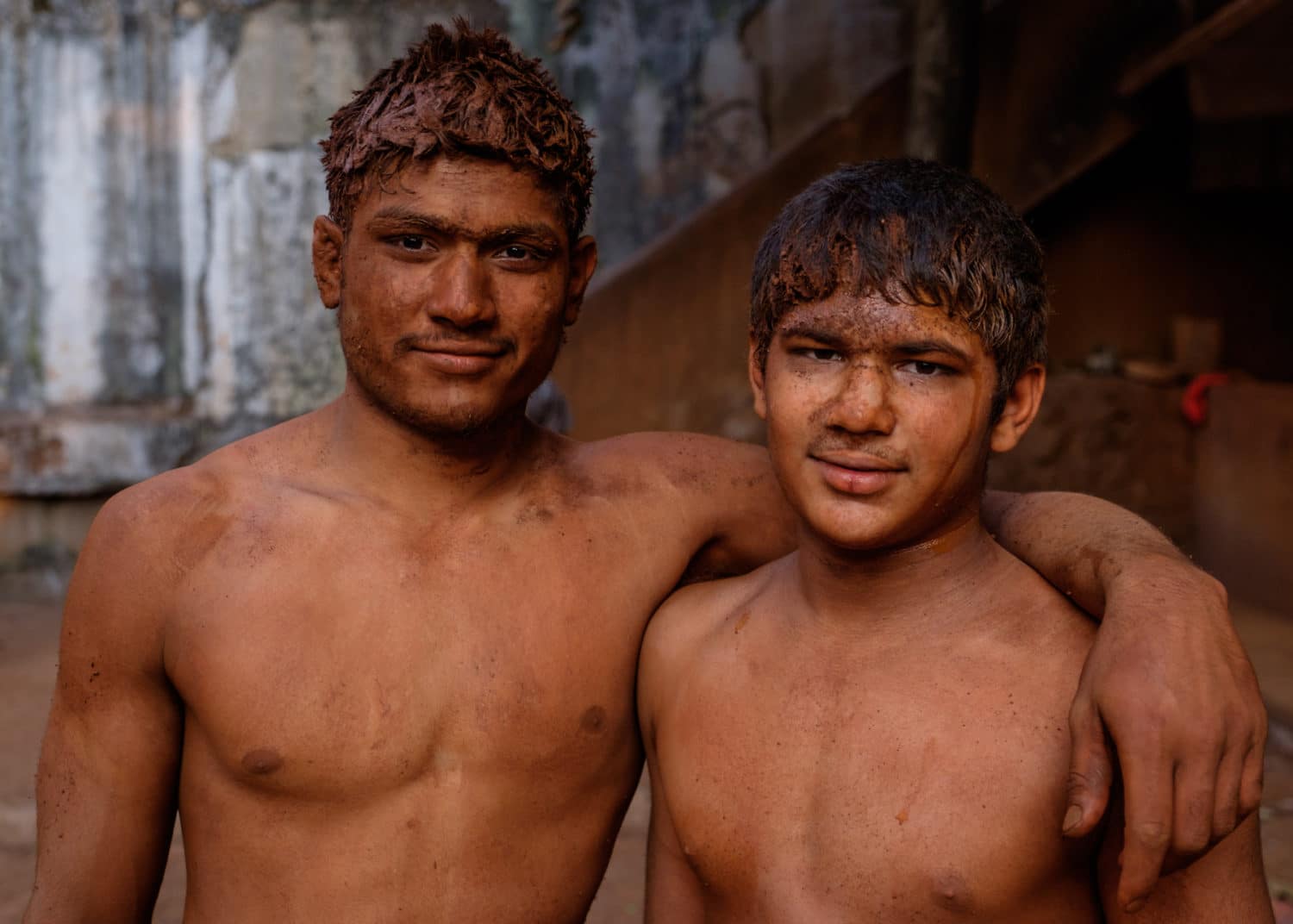
Being a wrestler is an expensive proposition. Professional wrestlers consume a rich diet consisting of almonds, pista and cashew nuts along with copious quantities of eggs, milk, fruit and desi ghee. Coupled with the gruelling training schedule that does not leave much time for other endeavours, the costs quickly add up. tournaments, the main source of income, occur only for half the year, and the project of earning a living isn’t very attractive for most.
Someone calls for Sameer, and he hurries off.
I turn my attention to the pit where 3 bouts are simultaneously underway. Before each bout the wrestlers, in an almost tender display, cover each other in the red mud from the pit, as a mark of respect, as well as to get a better grip on their opponent’s sweat and oil slicked bodies. In between bouts frequent breaks are taken to repeat the ritual. The wrestlers have a languid style, belying their large bodies.
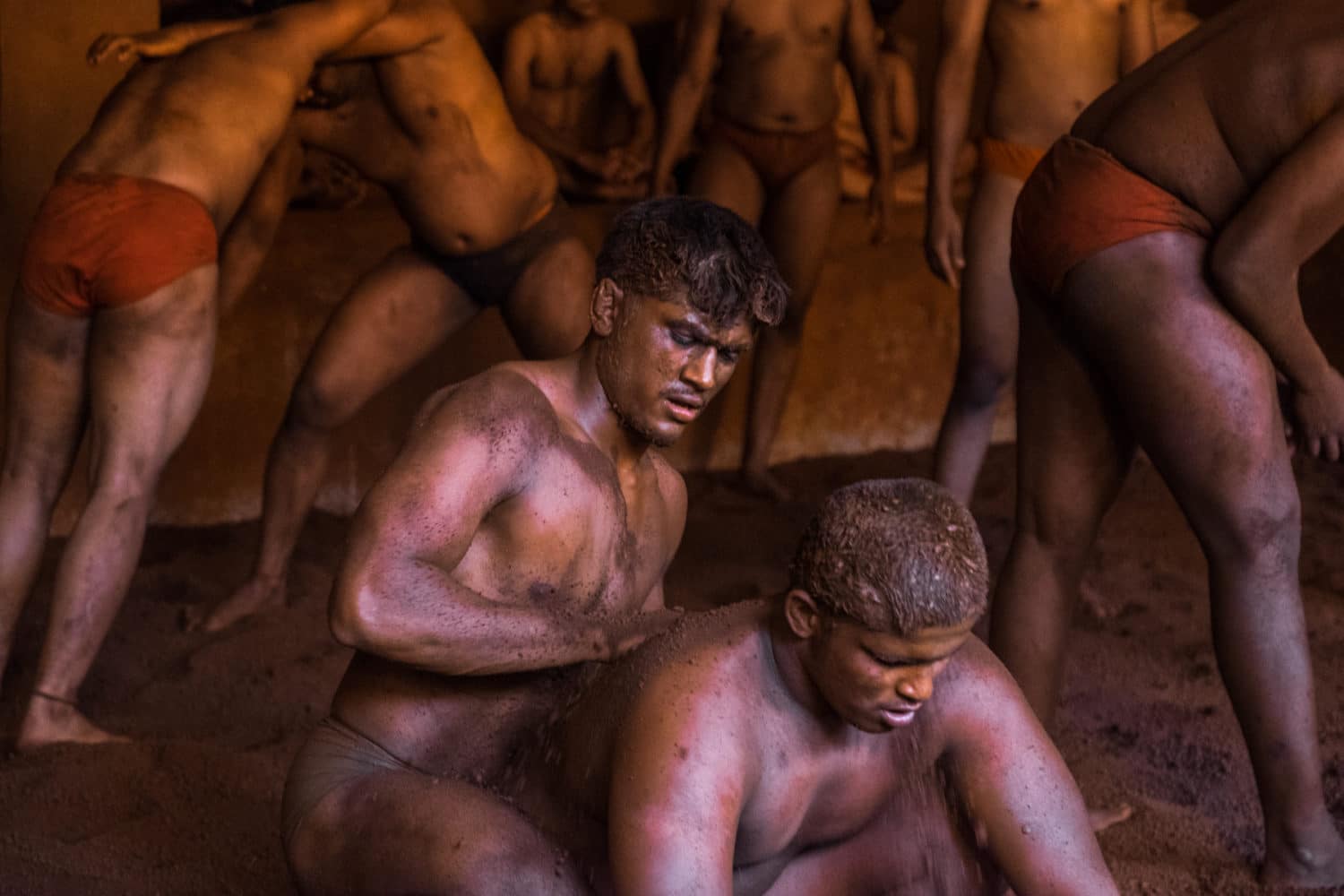
I observe Dutta, one of the senior wrestlers, who is built like a tank, but has an undeniable dexterity about him. Initial moves are slow, as Dutta and his opponent circle each other, locking wrists and testing each other for weaknesses. There is art in the dance they undertake, a game which is as much about strategy as it is about strength. The Great Gama, an iconic wrestler who is considered to be one of the greats, was undefeated throughout his career, and stood at all of 5’7”. The competitors here seem evenly matched, neither ceding much ground, and just when it looks like the match may go on for a while, the agile Dutta deftly twists and turns, gripping his opponent around the waist from behind, slamming him to mud in a astonishing display of technical prowess and strength.
After their bouts, the wrestler lounge around the temple joking in Marathi, their bodies caked in mud, the aggression of the haud replaced by an easy bonhomie. They want their pictures taken and we spend a few minutes taking portraits and group photos, before I leave, promising to WhatsApp their photos across.
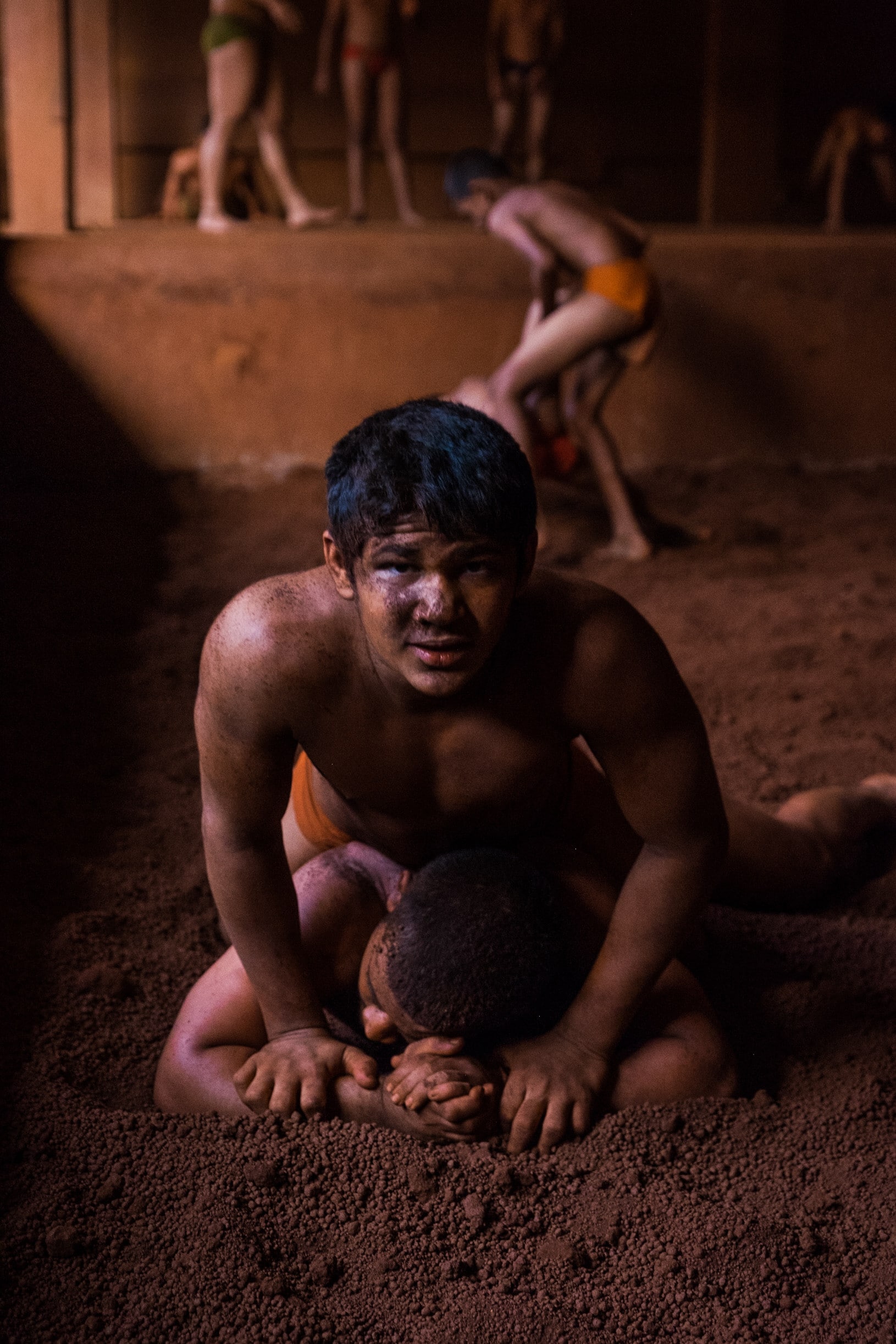
As I exit the taleem and walk into the main square, buzzing with locals and tourists, I pause for a moment under the statue of a jubilant Khashaba Jadhav, arms outstretched in victory, surveying all that lies around. At the base of the statue an old marble plaque pays homage to Kolhapur’s wrestling heroes, who have won medals in international competitions from the Olympics to the commonwealth to the Asiads, proud keepers of the sport and all it stands for. One can only hope that this old city and its sons and daughters, find a way to keep the torch of Kolhapur’s wrestling traditions burning and produce more champions like Jadhav in the years to come.
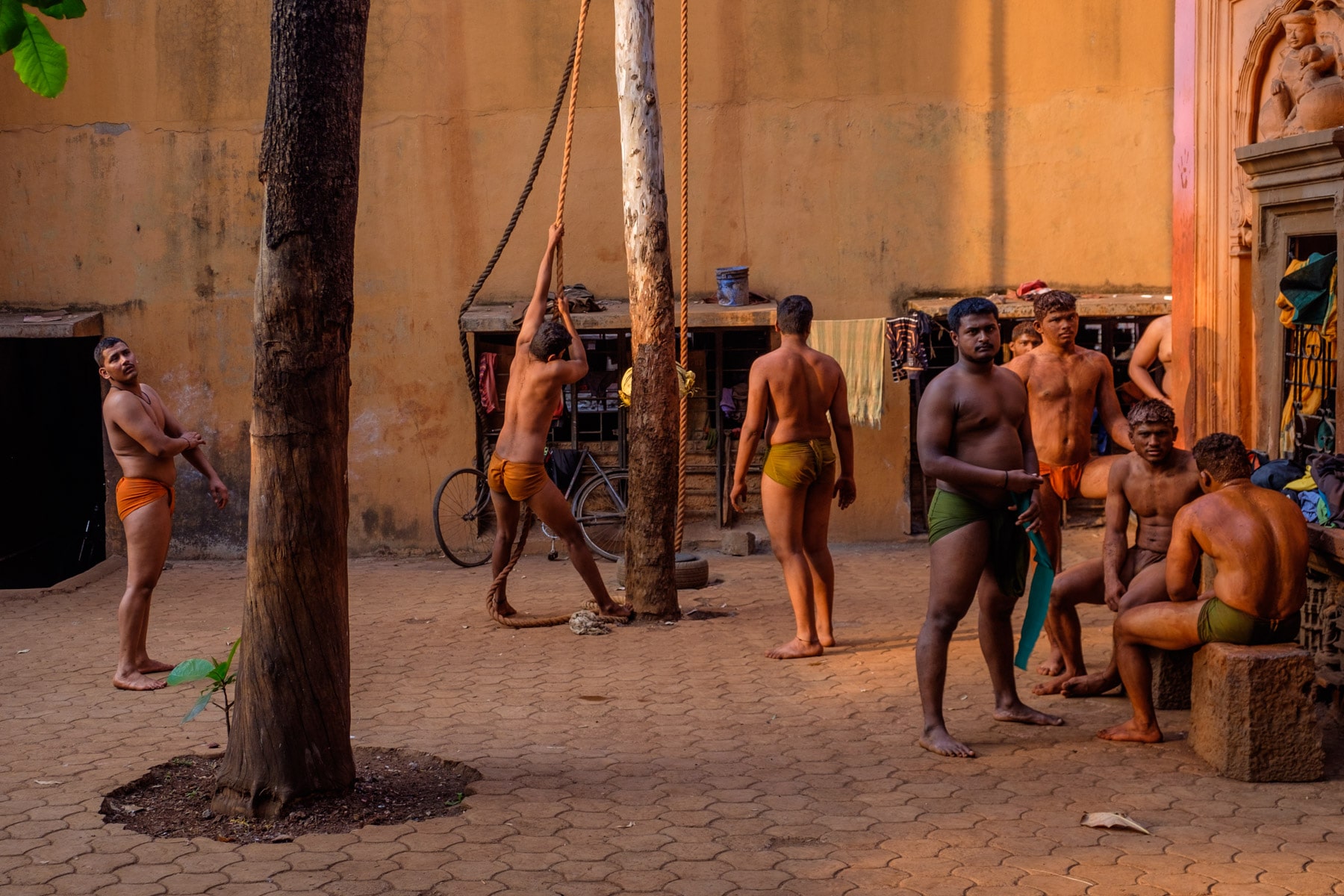
A version of this story first appeared in the September 2018 issue of Sports Illustrated.